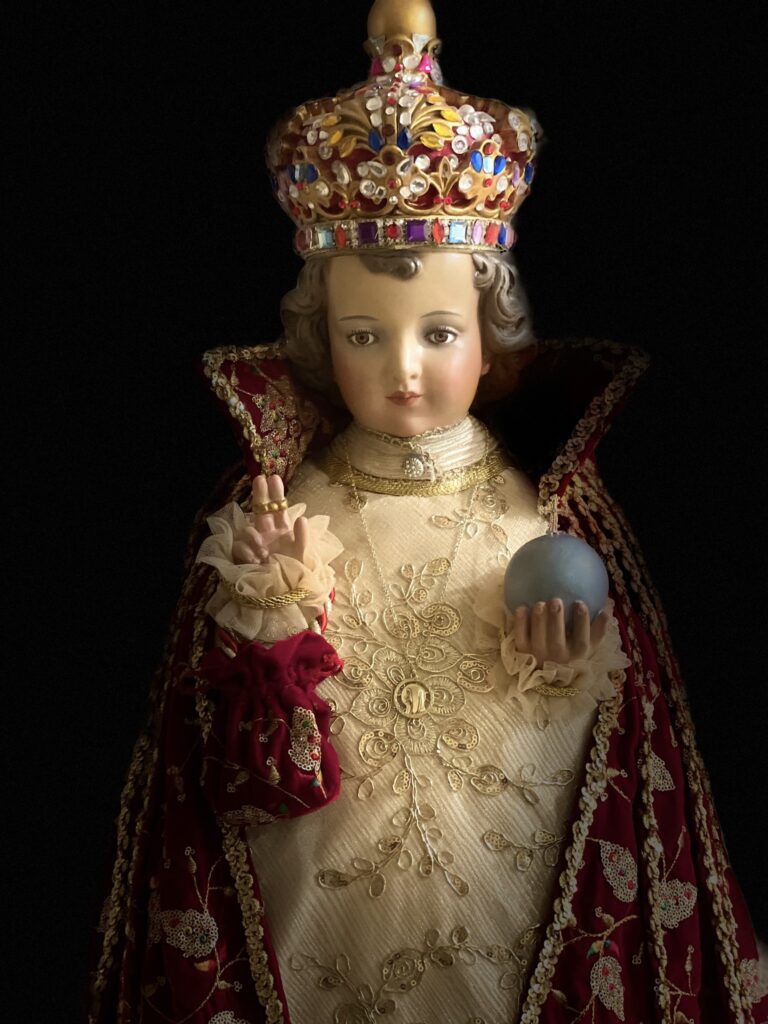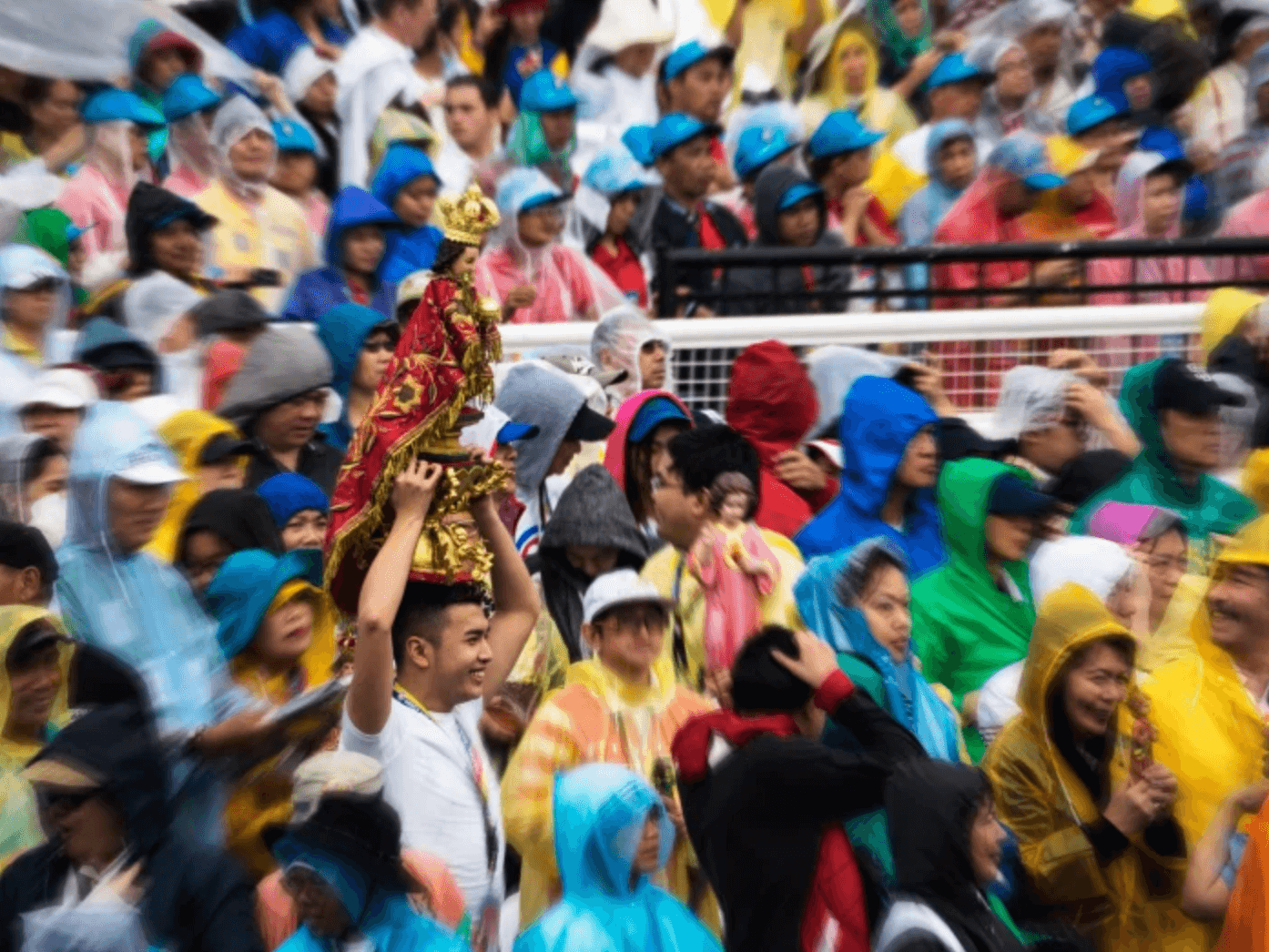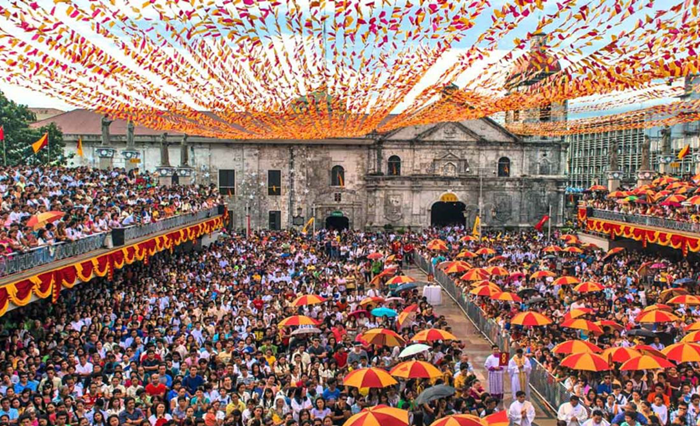
Tri-Valley Santo Niño Prayer Group
California
A Devotion to the Divine Child Jesus – Linking the Faithful Through Prayer and Heritage

The Infant Jesus of Prague is steeped in a storied past that unfolds in the 1600s. This revered statue is thought to have its roots in Spain, where it was initially a nuptial present to a royal Spanish lady, who later bequeathed it to her offspring, Marie Manrique. It was Marie’s progeny, Polyxena, who bestowed the statue upon the Carmelite order in Prague around the year 1628. Notable for its meticulous craftsmanship, the statue stands at a height of nineteen inches, sculpted from wood and finished with a fine layer of wax. It depicts the young Jesus garbed in regal attire, crowned, and clutching a globus cruciger, signifying his sovereignty over all creation.
The Santo Niño de Cebú is renowned for its miraculous history, with numerous accounts of divine interventions attributed to the revered statue.
Here are some of the miracles associated with the Santo Niño:

Protection from Calamities
The Santo Niño is believed to have protected the Visayans from calamities such as drought, pestilence, fire, and famine. The statue was often carried around the city during times of crisis, and miraculous events related to these calamities are recorded in historical documents.

Spiritual and Physical Cures
Devotees from the Philippines and around the world have reported miraculous spiritual and physical cures attributed to the Santo Niño. These testimonies span centuries and continue to be a significant aspect of the devotion to the Santo Niño.

Survival of War
During World War II, a bomb fell inside the Santo Niño Church, but the statue was recovered unscathed, which is considered one of the many miracles and powers of the Holy Image.

Historical Preservation
Despite the passage of time and various historical events, the Santo Niño de Cebú has remained intact, further cementing its status as a miraculous artifact.
These miracles have solidified the Santo Niño’s place as a symbol of faith and resilience, inspiring the annual Sinulog festival and drawing millions of pilgrims to the Basilica Minore del Santo Niño in Cebu. The enduring belief in the Santo Niño’s miraculous powers continues to play a vital role in the spiritual lives of many devotees.



In parallel, the Santo Niño Church in Cebu, also recognized as the Basilica Minore del Santo Niño, is the sanctuary of the Santo Niño de Cebú statue, echoing the likeness of the Infant Jesus of Prague. This artifact holds the distinction of being the Philippines’ most ancient Christian relic, a token of goodwill bestowed by the voyager Ferdinand Magellan to Rajah Humabon and his consort upon their conversion to Christianity in 1521. This effigy is celebrated for its purported miraculous nature and is the centerpiece of the annual Sinulog festival.



The bond between the Infant Jesus of Prague and the Santo Niño de Cebú is woven through their analogous depictions of the Christ Child and their profound significance in Catholic veneration. Both effigies are adorned in sovereign vestments and are synonymous with divine wonders and blessings. They command reverence at their respective abodes and have kindled a fervent following, spurring cultural festivities and devotional practices.
Despite the miles that separate them, these two effigies are united by a shared narrative within the Christian ethos, emblematic of the divine Child Jesus’s purity and grandeur. They stand as beacons of faith and cultural heritage, continuing to draw the devotion of pilgrims and faithful from across the globe.
